



生物多样性 ›› 2025, Vol. 33 ›› Issue (5): 24478. DOI: 10.17520/biods.2024478 cstr: 32101.14.biods.2024478
所属专题: 昆蒙框架目标12下的中国城市生物多样性研究专辑
徐欢1,#, 辛凤飞1,#, 施宏亮2, 袁琳3,4, 薄顺奇5, 赵欣怡6, 邓帅涛1, 潘婷婷1, 余婧1, 孙赛赛1, 薛程1,7,*( )
)
收稿日期:2024-10-31
接受日期:2025-02-12
出版日期:2025-05-20
发布日期:2025-06-23
通讯作者:
薛程
作者简介:第一联系人:#共同第一作者
基金资助:
Huan Xu1,#, Fengfei Xin1,#, Hongliang Shi2, Lin Yuan3,4, Shunqi Bo5, Xinyi Zhao6, Shuaitao Deng1, Tingting Pan1, Jing Yu1, Saisai Sun1, Cheng Xue1,7,*( )
)
Received:2024-10-31
Accepted:2025-02-12
Online:2025-05-20
Published:2025-06-23
Contact:
Cheng Xue
About author:First author contact:#Co-first authors
Supported by:摘要:
开展河口湿地修复并探究修复技术对栖息生境与鸟类多样性的影响是城市生物多样性保护与可持续利用的重要一环, 也是践行《中国生物多样性保护战略与行动计划(2023‒2030年)》与履行《生物多样性公约》缔约方大会通过的《昆明-蒙特利尔全球生物多样性框架》的重要内容。本研究以长江口北支为研究区域, 通过对比分析当前区域内存在的生态环境问题, 提出了针对性的修复方案, 开展了集成的生态修复技术应用。在生态修复工程结束后结合机器学习与野外调查的方法, 评估了生态修复后长江口生境以及鸟类多样性与生态受损前的恢复程度。本研究表明互花米草(Spartina alterniflora)治理、光滩营造、潮沟构建及本土盐沼植物群落恢复是提升河口湿地生境异质性、增加鸟类多样性的关键手段。本次生态修复后互花米草治理面积为12.97 ha, 芦苇(Phragmites australis)群落恢复面积9.15 ha, 潮沟构建长度为600 m; 芦苇种植区的鸟类多样性恢复情况最好, 冬季和春季的鸟类种数、数量和多样性指数均超过了2018年时生态未受损的水平, 最高记录到鸟类18种178只次; 潮沟营造区春季的鸟类种类、数量和多样性指数已恢复至原先的水平, 最高记录到13种68只次; 互花米草治理区的鸟类多样性恢复情况还与原先的水平有一定差距, 最高记录到鸟类8种90只次。本研究比较并揭示了不同修复技术对河口湿地生境及鸟类多样性提升的效果, 通过与国内外的生态修复工程开展对比分析, 可为我国开展后续生态修复提供经验借鉴, 并为退化河口湿地开展集成修复后的系统性生物多样性评价、城市生物多样性保护与可持续利用提供科学支撑。
徐欢, 辛凤飞, 施宏亮, 袁琳, 薄顺奇, 赵欣怡, 邓帅涛, 潘婷婷, 余婧, 孙赛赛, 薛程 (2025) 生态修复技术集成应用对长江口北支生境与鸟类多样性提升效果评估. 生物多样性, 33, 24478. DOI: 10.17520/biods.2024478.
Huan Xu, Fengfei Xin, Hongliang Shi, Lin Yuan, Shunqi Bo, Xinyi Zhao, Shuaitao Deng, Tingting Pan, Jing Yu, Saisai Sun, Cheng Xue (2025) Evaluation of effects of integrated ecological restoration technology on habitat and bird diversity improvement in the North Branch of Yangtze River Estuary. Biodiversity Science, 33, 24478. DOI: 10.17520/biods.2024478.
| 地物类别 Land cover types | 影像特征 Image features | 现场特征 Site features | 成像时间 Imaging time | |
|---|---|---|---|---|
| 影像缩略图 Image thumbnail | 特征描述 Characterization | 现场照片缩略图 Site photo thumbnail | ||
| 互花米草 Spartina alterniflora | 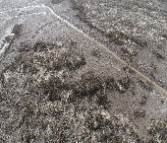 | 灰黑, 光滑 Grayish-black and smooth in texture |  | 2023.04 |
| 糙叶薹草 Carex scabrifolia | 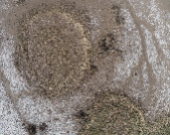 | 灰黄, 光滑 Gray-yellow and smooth in texture | 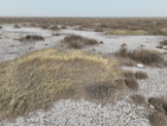 | 2023.04 |
| 芦苇 Phragmites australis | 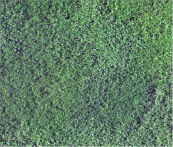 | 墨绿色, 粗糙 Dark green and rough in texture | 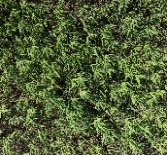 | 2023.08 |
| 芦苇 Phragmites australis |  | 黑色, 粗糙 Near-black and rough in texture |  | 2023.11 |
| 互花米草 Spartina alterniflora | 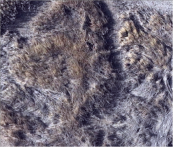 | 灰色, 较光滑 Gray and relatively smooth in texture | 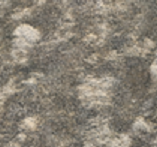 | 2024.08 |
| 碱蓬 Suaeda glauca | 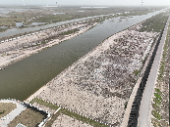 | 红黑, 粗糙 Reddish-black and rough in texture | 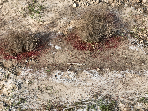 | 2023.04 |
| 碱蓬 Suaeda glauca | 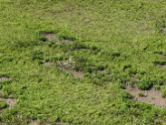 | 连片, 绿色, 光滑 Continuously distributed with a green and smooth in texture | 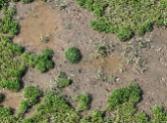 | 2024.08 |
| 光滩 Mudflat | 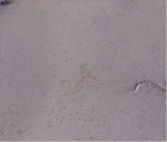 | 土灰色, 相对光滑 Soil-gray and a relatively smooth in texture |  | 2024.08 |
表1 不同时间尺度下基于无人机可见光影像的地物特征信息
Table 1 Land surface feature information based on unmanned aerial vehicle (UAV) visible-light images at multiple temporal scales
| 地物类别 Land cover types | 影像特征 Image features | 现场特征 Site features | 成像时间 Imaging time | |
|---|---|---|---|---|
| 影像缩略图 Image thumbnail | 特征描述 Characterization | 现场照片缩略图 Site photo thumbnail | ||
| 互花米草 Spartina alterniflora |  | 灰黑, 光滑 Grayish-black and smooth in texture |  | 2023.04 |
| 糙叶薹草 Carex scabrifolia |  | 灰黄, 光滑 Gray-yellow and smooth in texture |  | 2023.04 |
| 芦苇 Phragmites australis |  | 墨绿色, 粗糙 Dark green and rough in texture |  | 2023.08 |
| 芦苇 Phragmites australis |  | 黑色, 粗糙 Near-black and rough in texture |  | 2023.11 |
| 互花米草 Spartina alterniflora |  | 灰色, 较光滑 Gray and relatively smooth in texture |  | 2024.08 |
| 碱蓬 Suaeda glauca |  | 红黑, 粗糙 Reddish-black and rough in texture |  | 2023.04 |
| 碱蓬 Suaeda glauca |  | 连片, 绿色, 光滑 Continuously distributed with a green and smooth in texture |  | 2024.08 |
| 光滩 Mudflat |  | 土灰色, 相对光滑 Soil-gray and a relatively smooth in texture |  | 2024.08 |
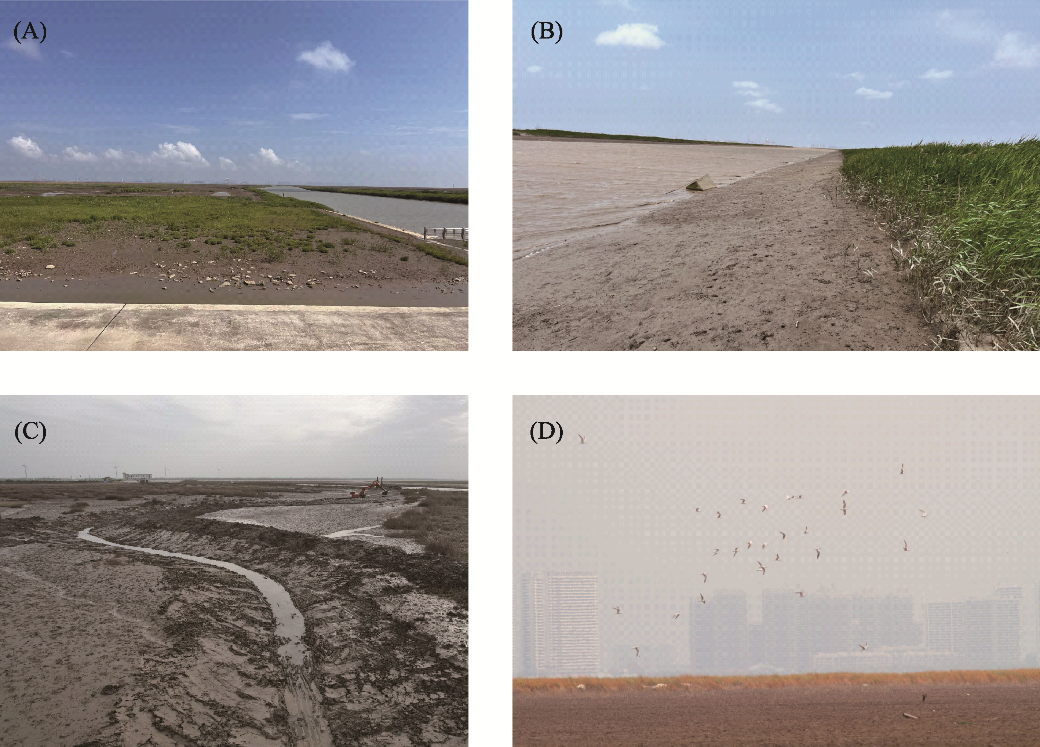
图4 长江口北支生态修复工程后区域现状。(A)本土盐沼植被恢复; (B)柔性护坡技术; (C)潮沟营造; (D)光滩营造。
Fig. 4 Current situation of the area after ecological restoration project in the North Branch of Yangtze River Estuary. (A) Native salt marsh vegetation restoration; (B) Flexible slope protection technology; (C) Tidal creek construction; (D) Mudflat construction.
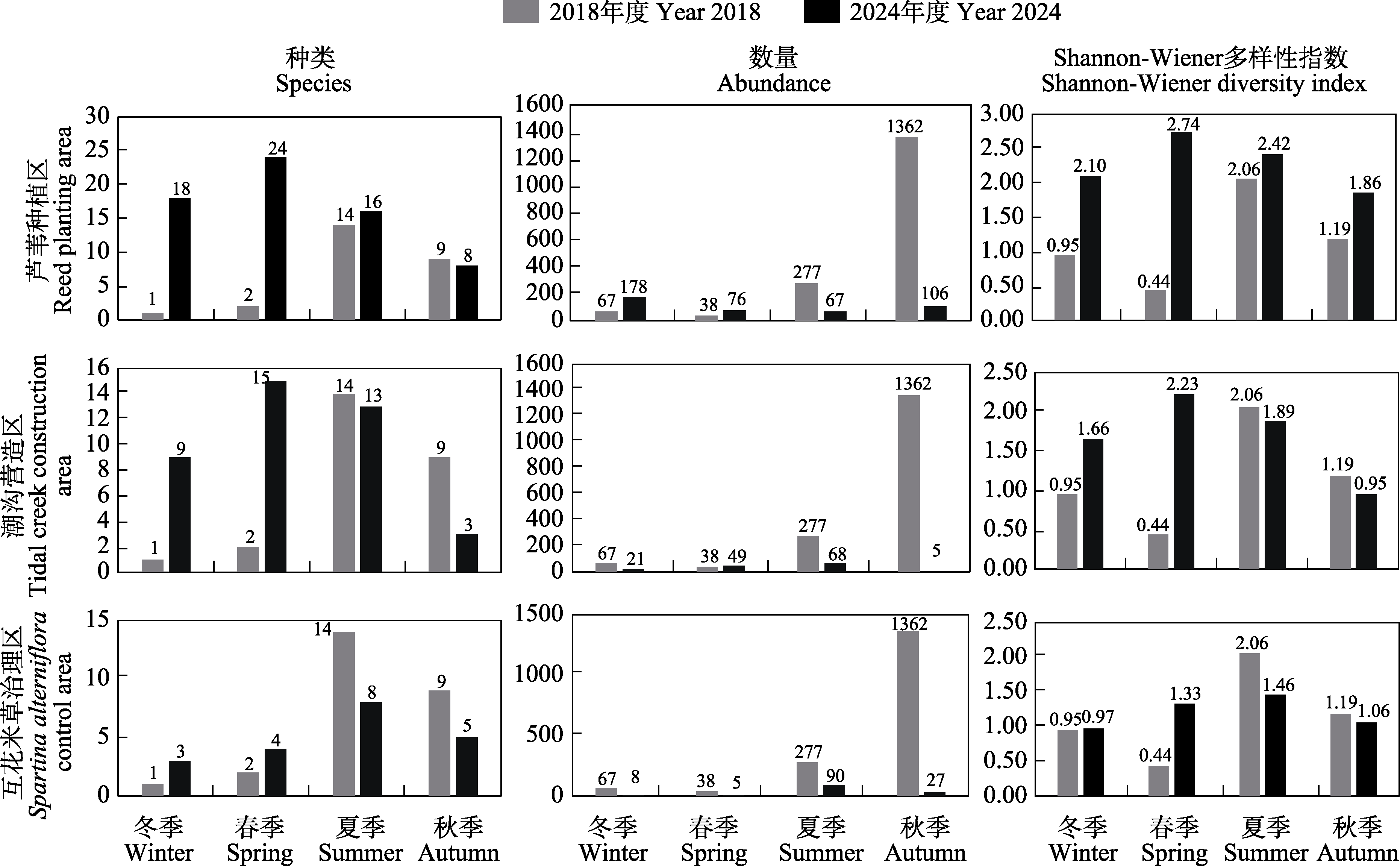
图8 长江口北支生态修复前后各区域鸟类群落结构特征比较
Fig. 8 Comparison of bird community structure characteristics in each region before and after ecological restoration of the North Branch of Yangtze River Estuary
| 物种 Species | 保护级别 Protection level | 芦苇种植区 Reed planting area | 潮沟营造区 Tidal creek construction area | 互花米草治理区 Spartina alterniflora control area | |
|---|---|---|---|---|---|
| 雁形目 Anseriformes | |||||
| 鸭科 Anatidae | |||||
| 斑嘴鸭 Anas zonorhyncha | - | 47 | 2 | 0 | |
| 绿头鸭 Anas platyrhynchos | - | 73 | 0 | 1 | |
| 翘鼻麻鸭 Tadorna tadorna | - | 20 | 0 | 0 | |
| 鸡形目 Galliformes | |||||
| 雉科 Phasianidae | |||||
| 雉鸡 Phasianus colchicus | - | 1 | 0 | 0 | |
| 鹳形目 Ciconiformes | |||||
| 鹳科 Ciconiidae | |||||
| 东方白鹳 Ciconia boyciana | I | 2 | 0 | 0 | |
| 鹈形目 Pelecaniformes | |||||
| 鹮科 Threskiorothidae | |||||
| 白琵鹭 Platalea leucorodia | II | 2 | 3 | 0 | |
| 鹭科 Ardeidae | |||||
| 夜鹭 Nycticorax nycticorax | - | 2 | 5 | 0 | |
| 牛背鹭 Bubulcus coromandus | - | 3 | 1 | 0 | |
| 苍鹭 Ardea cinerea | - | 21 | 12 | 14 | |
| 大白鹭 Ardea alba | - | 3 | 3 | 0 | |
| 中白鹭 Ardea intermedia | - | 1 | 0 | 0 | |
| 白鹭 Egretta garzetta | - | 57 | 6 | 6 | |
| 鲣鸟目 Suliformes | |||||
| 鸬鹚科 Phalacrocoracidae | |||||
| 普通鸬鹚 Phalacrocorax carbo | - | 18 | 3 | 0 | |
| 鹰形目 Accipitriformes | |||||
| 鹗科 Pandionidae | |||||
| 鹗 Pandion haliaetus | II | 0 | 0 | 2 | |
| 鹰科 Accipitridae | |||||
| 黑翅鸢 Elanus caeruleus | II | 1 | 0 | 0 | |
| 白尾鹞 Circus cyaneus | II | 0 | 1 | 0 | |
| 普通鵟 Buteo japonicus | II | 1 | 0 | 0 | |
| 鸻形目 Charadriiformes | |||||
| 反嘴鹬科 Recurvirostridae | |||||
| 反嘴鹬 Recurvirostra avosetta | - | 14 | 0 | 14 | |
| 金眶鸻 Charadrius dubius | - | 5 | 0 | 0 | |
| 环颈鸻 Charadrius alexandrinus | - | 1 | 5 | 0 | |
| 燕鸻科 Glareolidae | |||||
| 普通燕鸻 Glareola maldivarum | - | 5 | 0 | 0 | |
| 鹬科 Scolopacidae | |||||
| 中杓鹬 Numenius phaeopus | - | 5 | 8 | 1 | |
| 翻石鹬 Arenaria interpres | II | 1 | 0 | 0 | |
| 大滨鹬 Calidris tenuirostris | II | 12 | 0 | 0 | |
| 红颈滨鹬 Calidris ruficollis | - | 1 | 0 | 0 | |
| 黑腹滨鹬 Calidris alpina | - | 5 | 0 | 0 | |
| 矶鹬 Actitis hypoleucos | - | 7 | 2 | 0 | |
| 红脚鹬 Tringa totanus | - | 2 | 0 | 0 | |
| 翘嘴鹬 Xenus cinereus | - | 10 | 0 | 0 | |
| 鹤鹬 Tringa erythropus | - | 50 | 0 | 0 | |
| 青脚鹬 Tringa nebularia | - | 11 | 5 | 1 | |
| 鸥科 Laridae | |||||
| 黑嘴鸥 Saundersilarus saundersi | I | 103 | 6 | 118 | |
| 西伯利亚银鸥 Larus vegae | - | 6 | 0 | 0 | |
| 鸥嘴噪鸥 Gelochelidon nilotica | - | 1 | 2 | 0 | |
| 普通燕鸥 Sterna hirundo | - | 7 | 8 | 0 | |
| 须浮鸥 Chlidonias hybrida | - | 3 | 2 | 5 | |
| 白翅浮鸥 Chlidonias leucopterus | - | 2 | 3 | 4 | |
| 鸽形目 Columbiformes | |||||
| 鸠鸽科 Columbidae | |||||
| 珠颈斑鸠 Spilopelia chinensis | - | 2 | 0 | 0 | |
| 鹃形目 Cuculiformes | |||||
| 杜鹃科 Cuculidae | |||||
| 大杜鹃 Cuculus canorus | - | 3 | 1 | 0 | |
| 隼形目 Falconiformes | |||||
| 隼科 Falconidae | |||||
| 红隼 Falco tinnunculus | II | 3 | 0 | 0 | |
| 雀形目 Passeriformes | |||||
| 伯劳科 Laniidae | |||||
| 棕背伯劳 Lanius schach | - | 2 | 1 | 0 | |
| 卷尾科 Dicruridae | |||||
| 黑卷尾 Dicrurus macrocercus | - | 2 | 0 | 0 | |
| 鸦科 Corvidae | |||||
| 喜鹊 Pica serica | - | 0 | 2 | 0 | |
| 燕科 Hirundinidae | |||||
| 家燕 Hirundo rustica | - | 18 | 32 | 10 | |
| 树莺科 Cettiidae | |||||
| 强脚树莺 Horornis fortipes | - | 2 | 0 | 0 | |
| 苇莺科 Acrocephalidae | |||||
| 东方大苇莺 Acrocephalus orientalis | - | 1 | 0 | 0 | |
| 扇尾莺科 Cisticolidae | |||||
| 纯色山鹪莺 Prinia striata | - | 6 | 8 | 0 | |
| 鸦雀科 Paradoxornithidae | |||||
| 棕头鸦雀 Sinosuthora webbiana | - | 1 | 1 | 0 | |
| 震旦鸦雀 Paradoxornis heudei | II | 2 | 0 | 0 | |
| 鹟科 Muscicapidae | |||||
| 北红尾鸲 Phoenicurus auroreus | - | 0 | 2 | 0 | |
| 雀科 Passeridae | |||||
| 麻雀 Passer montanus | - | 2 | 37 | 0 | |
| 鹡鸰科 Motacillidae | |||||
| 白鹡鸰 Motacilla alba | - | 1 | 0 | 0 | |
表2 2024年度各区域鸟类调查名录
Table 2 List of birds in each area in 2024
| 物种 Species | 保护级别 Protection level | 芦苇种植区 Reed planting area | 潮沟营造区 Tidal creek construction area | 互花米草治理区 Spartina alterniflora control area | |
|---|---|---|---|---|---|
| 雁形目 Anseriformes | |||||
| 鸭科 Anatidae | |||||
| 斑嘴鸭 Anas zonorhyncha | - | 47 | 2 | 0 | |
| 绿头鸭 Anas platyrhynchos | - | 73 | 0 | 1 | |
| 翘鼻麻鸭 Tadorna tadorna | - | 20 | 0 | 0 | |
| 鸡形目 Galliformes | |||||
| 雉科 Phasianidae | |||||
| 雉鸡 Phasianus colchicus | - | 1 | 0 | 0 | |
| 鹳形目 Ciconiformes | |||||
| 鹳科 Ciconiidae | |||||
| 东方白鹳 Ciconia boyciana | I | 2 | 0 | 0 | |
| 鹈形目 Pelecaniformes | |||||
| 鹮科 Threskiorothidae | |||||
| 白琵鹭 Platalea leucorodia | II | 2 | 3 | 0 | |
| 鹭科 Ardeidae | |||||
| 夜鹭 Nycticorax nycticorax | - | 2 | 5 | 0 | |
| 牛背鹭 Bubulcus coromandus | - | 3 | 1 | 0 | |
| 苍鹭 Ardea cinerea | - | 21 | 12 | 14 | |
| 大白鹭 Ardea alba | - | 3 | 3 | 0 | |
| 中白鹭 Ardea intermedia | - | 1 | 0 | 0 | |
| 白鹭 Egretta garzetta | - | 57 | 6 | 6 | |
| 鲣鸟目 Suliformes | |||||
| 鸬鹚科 Phalacrocoracidae | |||||
| 普通鸬鹚 Phalacrocorax carbo | - | 18 | 3 | 0 | |
| 鹰形目 Accipitriformes | |||||
| 鹗科 Pandionidae | |||||
| 鹗 Pandion haliaetus | II | 0 | 0 | 2 | |
| 鹰科 Accipitridae | |||||
| 黑翅鸢 Elanus caeruleus | II | 1 | 0 | 0 | |
| 白尾鹞 Circus cyaneus | II | 0 | 1 | 0 | |
| 普通鵟 Buteo japonicus | II | 1 | 0 | 0 | |
| 鸻形目 Charadriiformes | |||||
| 反嘴鹬科 Recurvirostridae | |||||
| 反嘴鹬 Recurvirostra avosetta | - | 14 | 0 | 14 | |
| 金眶鸻 Charadrius dubius | - | 5 | 0 | 0 | |
| 环颈鸻 Charadrius alexandrinus | - | 1 | 5 | 0 | |
| 燕鸻科 Glareolidae | |||||
| 普通燕鸻 Glareola maldivarum | - | 5 | 0 | 0 | |
| 鹬科 Scolopacidae | |||||
| 中杓鹬 Numenius phaeopus | - | 5 | 8 | 1 | |
| 翻石鹬 Arenaria interpres | II | 1 | 0 | 0 | |
| 大滨鹬 Calidris tenuirostris | II | 12 | 0 | 0 | |
| 红颈滨鹬 Calidris ruficollis | - | 1 | 0 | 0 | |
| 黑腹滨鹬 Calidris alpina | - | 5 | 0 | 0 | |
| 矶鹬 Actitis hypoleucos | - | 7 | 2 | 0 | |
| 红脚鹬 Tringa totanus | - | 2 | 0 | 0 | |
| 翘嘴鹬 Xenus cinereus | - | 10 | 0 | 0 | |
| 鹤鹬 Tringa erythropus | - | 50 | 0 | 0 | |
| 青脚鹬 Tringa nebularia | - | 11 | 5 | 1 | |
| 鸥科 Laridae | |||||
| 黑嘴鸥 Saundersilarus saundersi | I | 103 | 6 | 118 | |
| 西伯利亚银鸥 Larus vegae | - | 6 | 0 | 0 | |
| 鸥嘴噪鸥 Gelochelidon nilotica | - | 1 | 2 | 0 | |
| 普通燕鸥 Sterna hirundo | - | 7 | 8 | 0 | |
| 须浮鸥 Chlidonias hybrida | - | 3 | 2 | 5 | |
| 白翅浮鸥 Chlidonias leucopterus | - | 2 | 3 | 4 | |
| 鸽形目 Columbiformes | |||||
| 鸠鸽科 Columbidae | |||||
| 珠颈斑鸠 Spilopelia chinensis | - | 2 | 0 | 0 | |
| 鹃形目 Cuculiformes | |||||
| 杜鹃科 Cuculidae | |||||
| 大杜鹃 Cuculus canorus | - | 3 | 1 | 0 | |
| 隼形目 Falconiformes | |||||
| 隼科 Falconidae | |||||
| 红隼 Falco tinnunculus | II | 3 | 0 | 0 | |
| 雀形目 Passeriformes | |||||
| 伯劳科 Laniidae | |||||
| 棕背伯劳 Lanius schach | - | 2 | 1 | 0 | |
| 卷尾科 Dicruridae | |||||
| 黑卷尾 Dicrurus macrocercus | - | 2 | 0 | 0 | |
| 鸦科 Corvidae | |||||
| 喜鹊 Pica serica | - | 0 | 2 | 0 | |
| 燕科 Hirundinidae | |||||
| 家燕 Hirundo rustica | - | 18 | 32 | 10 | |
| 树莺科 Cettiidae | |||||
| 强脚树莺 Horornis fortipes | - | 2 | 0 | 0 | |
| 苇莺科 Acrocephalidae | |||||
| 东方大苇莺 Acrocephalus orientalis | - | 1 | 0 | 0 | |
| 扇尾莺科 Cisticolidae | |||||
| 纯色山鹪莺 Prinia striata | - | 6 | 8 | 0 | |
| 鸦雀科 Paradoxornithidae | |||||
| 棕头鸦雀 Sinosuthora webbiana | - | 1 | 1 | 0 | |
| 震旦鸦雀 Paradoxornis heudei | II | 2 | 0 | 0 | |
| 鹟科 Muscicapidae | |||||
| 北红尾鸲 Phoenicurus auroreus | - | 0 | 2 | 0 | |
| 雀科 Passeridae | |||||
| 麻雀 Passer montanus | - | 2 | 37 | 0 | |
| 鹡鸰科 Motacillidae | |||||
| 白鹡鸰 Motacilla alba | - | 1 | 0 | 0 | |
| [1] | Adam P (2002) Handbook for restoring tidal wetlands. Journal of Experimental Marine Biology and Ecology, 268, 257-259. |
| [2] | Billah MM, Bhuiyan MKA, Islam MA, Das J, Hoque AR (2022) Salt marsh restoration: An overview of techniques and success indicators. Environmental Science and Pollution Research, 29, 15347-15363. |
| [3] | Bowron T, Neatt N, van Proosdij D, Lundholm J, Graham J (2011) Macro-tidal salt marsh ecosystem response to culvert expansion. Restoration Ecology, 19, 307-322. |
| [4] | Breiman L (2001) Machine Learning. Kluwer Academic Publishers, Dordrecht. |
| [5] | Burden A, Garbutt A, Evans CD (2019) Effect of restoration on saltmarsh carbon accumulation in Eastern England. Biology Letters, 15, 20180773. |
| [6] | Cao M (2019) The Dynamics of Birds’ Population and Biodiversity Value Research in Chongming Dongtan Wetland. PhD dissertation, Nanjing Forestry University, Nanjing. (in Chinese with English abstract) |
| [曹牧 (2019) 崇明东滩湿地鸟类种群动态及其多样性价值研究. 博士学位论文, 南京林业大学, 南京.] | |
| [7] | Cao M, Tang CD, Ma Q, Cao Y, Xue JH (2017) Inter-annual population variation of migratory birds in Chongming Dongtan National Nature Reserve. Journal of Nanjing Forestry University (Natural Sciences Edition), 41(1), 15-20. (in Chinese with English abstract) |
|
[曹牧, 汤臣栋, 马强, 曹莹, 薛建辉 (2017) 崇明东滩鸟类国家级自然保护区环志鸟类种群特征年际变化. 南京林业大学学报(自然科学版), 41(1), 15-20.]
DOI |
|
| [8] | Chai ZW, Lei WP, Mo XQ, Que PJ, Shang CH, Yang JW, Zhang ZW (2020) Bird diversity of Beidagang Wetland Nature Reserve in Tianjin City. Wetland Science, 18, 667-678. (in Chinese with English abstract) |
| [柴子文, 雷维蟠, 莫训强, 阙品甲, 尚成海, 阳积文, 张正旺 (2020) 天津市北大港湿地自然保护区的鸟类多样性. 湿地科学, 18, 667-678.] | |
| [9] | Chen P, Zhang Y, Zhu XJ, Lu CH (2019) Ecological effects of invasion by the smooth cordgrass Spartina alterniflora on birds. Acta Ecologica Sinica, 39, 2282-2290. (in Chinese with English abstract) |
| [陈潘, 张燕, 朱晓静, 鲁长虎 (2019) 互花米草入侵对鸟类的生态影响. 生态学报, 39, 2282-2290.] | |
| [10] | Chen XC, Gao RF, Huang XC, Tang JW (2016) Basic views and technological methods of salt marsh restoration and its progresses in implementation. Marine Environmental Science, 35, 467-472. (in Chinese with English abstract) |
| [陈雪初, 高如峰, 黄晓琛, 唐剑武 (2016) 欧美国家盐沼湿地生态恢复的基本观点、技术手段与工程实践进展. 海洋环境科学, 35, 467-472.] | |
| [11] | Choi C, Gan XJ, Hua N, Wang Y, Ma ZJ (2014) The habitat use and home range analysis of Dunlin (Calidris alpina) in Chongming Dongtan, China and their conservation implications. Wetlands, 34, 255-266. |
| [12] | Craft C, Megonigal P, Broome S, Stevenson J, Freese R, Cornell J (2003) The pace of ecosystem development of constructed Spartina alterniflora marshes. Ecological Applications, 13, 1417-1432. |
| [13] | Cutajar J, Shimeta J, Nugegoda D (2012) Impacts of the invasive grass Spartina anglica on benthic macrofaunal assemblages in a temperate Australian saltmarsh. Marine Ecology Progress Series, 464, 107-120. |
| [14] | Dai ZJ, Fagherazzi S, Mei XF, Chen JY, Meng Y (2016) Linking the infilling of the North Branch in the Changjiang (Yangtze) estuary to anthropogenic activities from 1958 to 2013. Marine Geology, 379, 1-12. |
| [15] | Feng HC, Tang LQ, Wang YH, Guo CS, Liu DB, Zhao HM, Zhao LP, Wang WJ (2020) Effects of recent morphological change on the redistribution of flow discharge in the Yangtze River Delta. Continental Shelf Research, 208, 104218. |
| [16] | Gan XJ, Choi C, Wang Y, Ma ZJ, Chen JK, Li B (2010) Alteration of habitat structure and food resources by invasive smooth cordgrass affects habitat use by wintering saltmarsh birds at Chongming Dongtan, East China. The Auk, 127, 317-327. |
| [17] | Genovesi P, Carboneras C, Vilà M, Walton P (2015) EU adopts innovative legislation on invasive species: A step towards a global response to biological invasions? Biological Invasions, 17, 1307-1311. |
| [18] | Guo LC, Xie WM, Xu F, Wang XY, Zhu CY, Meng Y, Zhang WG, He Q (2022) A historical review of sediment export-import shift in the North Branch of Changjiang Estuary. Earth Surface Processes and Landforms, 47, 5-16. |
| [19] | Hagy HM, Hine CS, Horath MM, Yetter AP, Smith RV, Stafford JD (2017) Waterbird response indicates floodplain wetland restoration. Hydrobiologia, 804, 119-137. |
| [20] | He K, Zhang ZY, Song AN, Shen QF, Wang JY, Chen XC (2023) Impact of coastal ecological restoration project on bird diversity and community dynamics. Journal of East China Normal University (Natural Science), (3), 158-166. (in Chinese with English abstract) |
| [贺坤, 张紫菀, 宋桉楠, 沈启帆, 汪嘉怡, 陈雪初 (2023) 海岸带生态修复工程对鸟类多样性及群落动态变化的影响分析. 华东师范大学学报(自然科学版), (3), 158-166.] | |
| [21] | Hu YK, Pang YW, Jiao SW, Huang YX, Xu JF (2019) Temporal and spatial variation of suitable habitat for shorebird in Hangzhou Bay wetland based on remote sensing. Journal of Hangzhou Normal University (Natural Science Edition), 18, 319-328. (in Chinese with English abstract) |
| [胡越凯, 庞毓雯, 焦盛武, 黄雨馨, 徐俊锋 (2019) 基于遥感的杭州湾湿地鸻鹬类水鸟适宜生境时空变化特征研究. 杭州师范大学学报(自然科学版), 18, 319-328.] | |
| [22] | Huang ZJ, Liu JT, Xia DX, Chen XL (2021) The effects of ecological restoration of mangroves on the population dynamics of Ardeid birds in coastal wetlands. Wetland Science & Management, 17(1), 19-22. (in Chinese with English abstract) |
| [黄智君, 刘劲涛, 夏丹霞, 陈小麟 (2021) 滨海湿地红树林生态修复对鹭科鸟类种群动态的影响. 湿地科学与管理, 17(1), 19-22.] | |
| [23] |
Jiang WG, Zhang Z, Ling ZY, Deng YW (2023) Experience and future research trends of wetland protection and restoration in China. Acta Geographica Sinica, 78, 2223-2240. (in Chinese with English abstract)
DOI |
|
[蒋卫国, 张泽, 凌子燕, 邓雅文 (2023) 中国湿地保护修复管理经验与未来研究趋势. 地理学报, 78, 2223-2240.]
DOI |
|
| [24] | Li B, Liao CZ, Zhang XD, Chen HL, Wang Q, Chen ZY, Gan XJ, Wu JH, Zhao B, Ma ZJ, Cheng XL, Jiang LF, Chen JK (2009) Spartina alterniflora invasions in the Yangtze River Estuary, China: An overview of current status and ecosystem effects. Ecological Engineering, 35, 511-520. |
| [25] | Li L, Ji YX, Teng F, Xu SQ (2024) The recent morphological evolution in the upper mouth sandbar of the North Branch and the impacts on its upper reach in the Changjiang Estuary. Marine Geology Frontiers, 40(7), 56-67. (in Chinese with English abstract) |
| [李路, 季永兴, 滕飞, 徐双全 (2024) 长江口北支上口江心沙近期演变及其对北支上段的影响. 海洋地质前沿, 40(7), 56-67.] | |
| [26] | Li YR, Wu HT, Zhang S, Lu X, Lu KL (2021) Morphological characteristics and changes of tidal creeks in coastal wetlands of the Yellow River Delta under Spartina alterniflora invasion and continuous expansion. Wetland Science, 19(1), 88-97. (in Chinese with English abstract) |
| [李昱蓉, 武海涛, 张森, 卢霞, 芦康乐 (2021) 互花米草入侵和持续扩张下黄河三角洲滨海湿地潮沟的形态特征及其变化. 湿地科学, 19(1), 88-97.] | |
| [27] | Li ZP, Zhu JR (2022) Numerical simulation of the North Branch regime change impact on saltwater intrusion in the Yangtze River Estuary from 2007 to 2016. Journal of East China Normal University (Natural Science), (3), 109-124. (in Chinese with English abstract) |
| [李志鹏, 朱建荣 (2022) 2007-2016年北支河势变化对长江口盐水入侵影响数值研究. 华东师范大学学报(自然科学版), (3), 109-124.] | |
| [28] | Liu J, Niu JY, Zou YA, Lu S, Wang TH (2015) Changes in the waterbird community of the ecological restored wetlands in Pudong Dongtan, Shanghai. Resources and Environment in the Yangtze Basin, 24, 219-226. (in Chinese with English abstract) |
| [刘晶, 牛俊英, 邹业爱, 路珊, 王天厚 (2015) 上海浦东东滩鸟类栖息地生态修复区的水鸟群落变化. 长江流域资源与环境, 24, 219-226.] | |
| [29] | Liu N, Dai XH, Wang J, Xie D (2023) Restoration practices and studies of habitat restoration based on natural solutions: A case study of Tianfu National Wetland Park. Wetland Science & Management, 19(5), 86-89. (in Chinese with English abstract) |
| [刘宁, 戴小华, 王洁, 谢冬 (2023) 基于自然解决方案的栖息地修复实践与研究——以天福国家湿地公园为例. 湿地科学与管理, 19(5), 86-89.] | |
| [30] |
Ma KP (2023) Kunming-Montreal Global Biodiversity Framework: An important global agenda for biodiversity conservation. Biodiversity Science, 31, 23133. (in Chinese)
DOI |
|
[马克平 (2023) 《昆明-蒙特利尔全球生物多样性框架》是重要的全球生物多样性保护议程. 生物多样性, 31, 23133.]
DOI |
|
| [31] | Ma ZJ, Gan XJ, Cai YT, Chen JK, Li B (2011) Effects of exotic Spartina alterniflora on the habitat patch associations of breeding saltmarsh birds at Chongming Dongtan in the Yangtze River estuary, China. Biological Invasions, 13, 1673-1686. |
| [32] | Messarosr C, Woolley GS, Morgan MJ (2012) The Function of Ecosystems. In Tech, Croatia. |
| [33] | Mistry J, Berardi A, Simpson M (2008) Birds as indicators of wetland status and change in the North Rupununi, Guyana. Biodiversity and Conservation, 17, 2383-2409. |
| [34] | Mitsch WJ (1993) Ecological engineering: A cooperative role with the planetary life-support system. Environmental Science & Technology, 27, 438-445. |
| [35] | Mitsch WJ (2014) When will ecologists learn engineering and engineers learn ecology? Ecological Engineering, 65, 9-14. |
| [36] | Schrift AM, Mendelssohn IA, Materne MD (2008) Salt marsh restoration with sediment-slurry amendments following a drought-induced large-scale disturbance. Wetlands, 28, 1071-1085. |
| [37] | Shao YC, Liu Y, Zhou X, Wang XY, Lü ZJ, Wu DA (2024) Effect of topographic change on inverted brine in North Branch of the Yangtze Estuary. Urban Roads Bridges & Flood Control, (4), 1-7. (in Chinese with English abstract) |
| [邵雨辰, 刘懿, 周先, 王翔宇, 吕紫君, 吴德安 (2024) 长江口北支地形变化对倒灌盐水的影响. 城市道桥与防洪, (4), 1-7.] | |
| [38] | Strong DR, Ayres DR (2013) Ecological and evolutionary misadventures of Spartina. Annual Review of Ecology, Evolution, and Systematics, 44, 389-410. |
| [39] | Sun CZ, Zhen L, Wang C, Yan BY, Cao XC, Wu RZ (2015) Impacts of ecological restoration and human activities on habitat of overwintering migratory birds in the wetland of Poyang Lake, Jiangxi Province, China. Journal of Mountain Science, 12, 1302-1314. |
| [40] | Sun SS, Wang YJ, Liu DY, Zhang T, Tian B (2022) Spatial distributions and sources of organic matter and its role in food webs in the Chongming Dongtan mudflats in summer. Marine Environmental Science, 41, 408-415. (in Chinese with English abstract) |
| [孙赛赛, 王玉珏, 刘东艳, 张婷, 田波 (2022) 崇明东滩光滩带夏季有机质空间分布特征、来源组成及食物网作用. 海洋环境科学, 41, 408-415.] | |
| [41] | Teal JM, Weinstein MP (2002) Ecological engineering, design, and construction considerations for marsh restorations in Delaware Bay, USA. Ecological Engineering, 18, 607-618. |
| [42] | Teal JM, Weishar L (2005) Ecological engineering, adaptive management, and restoration management in Delaware Bay salt marsh restoration. Ecological Engineering, 25, 304-314. |
| [43] | Temmerman S, Meire P, Bouma TJ, Herman PM, Ysebaert T, Vriend HJD (2013) Ecosystem-based coastal defence in the face of global change. Nature, 504, 79-83. |
| [44] | van Proosdij D, Lundholm J, Neatt N, Bowron T, Graham J (2010) Ecological re-engineering of a freshwater impoundment for salt marsh restoration in a hypertidal system. Ecological Engineering, 36, 1314-1332. |
| [45] | Vandenbruwaene W, Meire P, Temmerman S (2012) Formation and evolution of a tidal channel network within a constructed tidal marsh. Geomorphology, 151, 114-125. |
| [46] | Weishar LL, Teal JM, Hinkle R (2005) Designing large-scale wetland restoration for Delaware Bay. Ecological Engineering, 25, 231-239. |
| [47] |
Whitfield AK (2020) Littoral habitats as major nursery areas for fish species in estuaries: A reinforcement of the reduced predation paradigm. Marine Ecology Progress Series, 649, 219-234.
DOI |
| [48] | Xiao XW, Yu XB, Pan MQ (2012) Implementation and implications of everglade wetland restoration plan in southern Florida, USA. Wetland Science & Management, 8(3), 31-35. (in Chinese with English abstract) |
| [肖协文, 于秀波, 潘明麒 (2012) 美国南佛罗里达大沼泽湿地恢复规划、实施及启示. 湿地科学与管理, 8(3), 31-35.] | |
| [49] |
Xu J, Wang JZ (2023) Analysis of the main elements and implications of the Kunming-Montreal Global Biodiversity Framework. Biodiversity Science, 31, 23020. (in Chinese with English abstract)
DOI |
|
[徐靖, 王金洲 (2023) 《昆明-蒙特利尔全球生物多样性框架》主要内容及其影响. 生物多样性, 31, 23020.]
DOI |
|
| [50] | Xu L, Li B, Yuan X, Xu HF (2006) The characteristics of the avian community in Chongming Dongtan spring 2003. Chinese Journal of Zoology, 41(6), 120-126. (in Chinese with English abstract) |
| [徐玲, 李波, 袁晓, 徐宏发 (2006) 崇明东滩春季鸟类群落特征. 动物学杂志, 41(6), 120-126.] | |
| [51] | Yang W, Qiao YJ, Li N, Zhao H, Yang R, Leng X, Cheng XL, An SQ (2017) Seawall construction alters soil carbon and nitrogen dynamics and soil microbial biomass in an invasive Spartina alterniflora salt marsh in Eastern China. Applied Soil Ecology, 110, 1-11. |
| [52] | Yuan ZS, Xing JH, Qiao HJ, Yang L, Song G (2022) Rapid bird diversity survey based on simultaneous counting and zoned direct number methods—A case of wetland birds’ monitoring in Lalu, 2020 winter. Plateau Science Research, 6(3), 45-52. (in Chinese with English abstract) |
| [袁志胜, 邢家华, 乔慧捷, 杨乐, 宋刚 (2022) 基于同步计数和分区直数法相结合的鸟类多样性快速调查——以2020年冬季拉鲁湿地监测为例. 高原科学研究, 6(3), 45-52.] | |
| [53] | Zhang B, Yuan X, Pei EL, Niu JY, Heng NN, Wang TH (2011) Change of waterbird community structure after the intertidal mudflat reclamation in the Yangtze River Mouth: A case study of Nanhui Dongtan area. Acta Ecologica Sinica, 31, 4599-4608. (in Chinese with English abstract) |
| [张斌, 袁晓, 裴恩乐, 牛俊英, 衡楠楠, 王天厚 (2011) 长江口滩涂围垦后水鸟群落结构的变化——以南汇东滩为例. 生态学报, 31, 4599-4608.] | |
| [54] |
Zhang QQ, Han GX, Lu F, Zhou YF, Wang XJ, Li PG, Chu XJ, He WJ, Yu DX, Song WM, Xu JW (2022) Effects of different restoration ages on plant diversity and community stability of wetlands in the Yellow River Delta. Chinese Journal of Ecology, 41, 1249-1257. (in Chinese with English abstract)
DOI |
| [张奇奇, 韩广轩, 路峰, 周英锋, 王晓杰, 李培广, 初小静, 贺文君, 于冬雪, 宋维民, 许景伟 (2022) 不同修复年限对黄河三角洲湿地植物多样性和群落稳定性的影响. 生态学杂志, 41, 1249-1257.] | |
| [55] | Zhao ZY, Zhang LQ, Li XZ, Yuan L, Bouma T (2021) The onset of secondary seed dispersal is controlled by germination-features: A neglected process in sudden saltmarsh establishment. Limnology and Oceanography, 66, 3070-3084. |
| [56] | Zhou WH, Zhu JH, Liu HX, Liu DY, Wen D (2018) Overview of wetland bird survey methods. Chinese Journal of Wildlife, 39, 588-593. (in Chinese with English abstract) |
| [周雯慧, 朱京海, 刘合鑫, 刘冬烨, 问鼎 (2018) 湿地鸟类调查方法概述. 野生动物学报, 39, 588-593.] | |
| [57] | Zhu H, Wu HT, Xing XX, Xie T, Song CC, Wang GD, Jiang M (2023) Achievement of wetland protection and restoration and development strategies in China. Bulletin of Chinese Academy of Sciences, 38, 365-375. (in Chinese with English abstract) |
| [祝惠, 武海涛, 邢晓旭, 谢天, 宋长春, 王国栋, 姜明 (2023) 中国湿地保护修复成效及发展策略. 中国科学院院刊, 38, 365-375.] | |
| [58] | Zuo P, Zhao SH, Liu CA, Wang CH, Liang YB (2012) Distribution of Spartina spp. along China’s coast. Ecological Engineering, 40, 160-166. |
| [1] | 康燕, 干靓, 俞霖琳, 何晨静, 张理卿, 吴婧彬. 基于NbS的城市小微栖息地营造与网络构建模式: 以上海市长宁区生境花园为例[J]. 生物多样性, 2025, 33(5): 24528-. |
| [2] | 段菲, 刘鸣章, 卜红亮, 俞乐, 李晟. 城市化对鸟类群落组成及功能特征的影响——以京津冀地区为例[J]. 生物多样性, 2024, 32(8): 23473-. |
| [3] | 王秦韵, 张玉泉, 刘浩, 李明, 刘菲, 赵宁, 陈鹏, 齐敦武, 阙品甲. 成都大熊猫繁育研究基地鸟类多样性[J]. 生物多样性, 2024, 32(8): 24066-. |
| [4] | 苏荣菲, 陈睿山, 俞霖琳, 吴婧彬, 康燕. 基于红外相机调查的上海市长宁区社区生境花园生物多样性[J]. 生物多样性, 2024, 32(8): 24068-. |
| [5] | 白皓天, 余上, 潘新园, 凌嘉乐, 吴娟, 谢恺琪, 刘阳, 陈学业. AI辅助识别的鸟类被动声学监测在城市湿地公园中的应用[J]. 生物多样性, 2024, 32(8): 24188-. |
| [6] | 王鹏, 隋佳容, 丁欣瑶, 王伟中, 曹雪倩, 赵海鹏, 王彦平. 郑州城市公园鸟类群落嵌套分布格局及其影响因素[J]. 生物多样性, 2024, 32(3): 23359-. |
| [7] | 郝泽周, 张承云, 李乐, 高丙涛, 曾伟, 王淳, 王梓炫, 黄万涛, 张悦, 裴男才, 肖治术. 城市鸟类多样性被动声学监测与评价技术应用[J]. 生物多样性, 2024, 32(10): 24123-. |
| [8] | 李乐, 张承云, 裴男才, 高丙涛, 王娜, 李嘉睿, 武瑞琛, 郝泽周. 基于被动声学监测技术的城市绿地景观格局与鸟类多样性关联分析[J]. 生物多样性, 2024, 32(10): 24296-. |
| [9] | 王淏林, 张怀胜, 朱建强, 陈中义, 柯雨琳, 杨涛, 陈卉. 麋鹿食物组成及其分析方法研究进展[J]. 生物多样性, 2024, 32(1): 23057-. |
| [10] | 张楚然, 李生发, 李逢昌, 唐志忠, 刘辉燕, 王丽红, 顾荣, 邓云, 张志明, 林露湘. 云南鸡足山亚热带半湿润常绿阔叶林20 ha动态监测样地木本植物生境关联与群落数量分类[J]. 生物多样性, 2024, 32(1): 23393-. |
| [11] | 刘彩莲, 张雄, 樊恩源, 王松林, 姜艳, 林柏岸, 房璐, 李玉强, 刘乐彬, 刘敏. 中国海域海马的物种多样性、生态特征及保护建议[J]. 生物多样性, 2024, 32(1): 23282-. |
| [12] | 杨舒涵, 王贺, 陈磊, 廖蓥飞, 严光, 伍一宁, 邹红菲. 松嫩平原异质生境对土壤线虫群落特征的影响[J]. 生物多样性, 2024, 32(1): 23295-. |
| [13] | 王明慧, 陈昭铨, 李帅锋, 黄小波, 郎学东, 胡子涵, 尚瑞广, 刘万德. 云南普洱季风常绿阔叶林不同种子扩散方式的优势种空间点格局分析[J]. 生物多样性, 2023, 31(9): 23147-. |
| [14] | 钟欣艺, 赵凡, 姚雪, 吴雨茹, 许银, 鱼舜尧, 林静芸, 郝建锋. 三星堆遗址城墙不同维护措施下草本植物物种多样性与土壤抗冲性的关系[J]. 生物多样性, 2023, 31(8): 23169-. |
| [15] | 刘伟, 王濡格, 范天巧, 娜依曼·阿不都力江, 宋新航, 肖书平, 郭宁, 帅凌鹰. 福建省明溪县黑冠鹃隼生境适宜性[J]. 生物多样性, 2023, 31(7): 22660-. |
| 阅读次数 | ||||||
|
全文 |
|
|||||
|
摘要 |
|
|||||
备案号:京ICP备16067583号-7
Copyright © 2022 版权所有 《生物多样性》编辑部
地址: 北京香山南辛村20号, 邮编:100093
电话: 010-62836137, 62836665 E-mail: biodiversity@ibcas.ac.cn